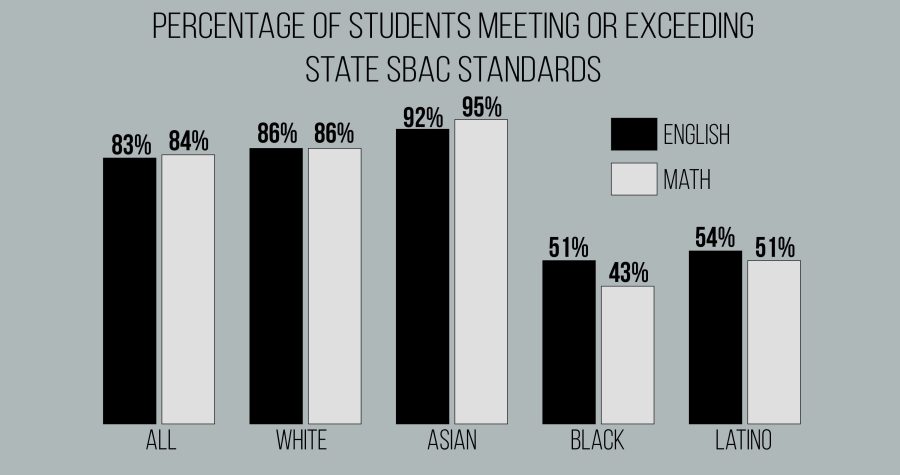The results are in — the aggregated data from the Smarter Balance Assessment Consortium (SBAC) for Palo Alto Unified School District’s (PAUSD) elementary schools has been analyzed, evaluated and presented to the PAUSD Board of Education.
The data, presented to the Board by the district office staff, shows overall high performances in the district as a well as a large, but slightly decreased from previous years, achievement gap between white and Asian students and black and Latino students.
According to the report, 83 percent of students in the district are meeting or exceeding the state standard for English Language Arts and Literacy and 84 percent of students meet or exceeded the state standards for math.
These results are significantly higher than the average for California and Santa Clara County.
In English, the percentage of PAUSD students meeting or exceeding state standards is about 21 percent higher than the average for Santa Clara County and about 34 percent higher than the California average.
Meanwhile, the percentage of PAUSD students meeting or exceeding state standards in math is 29 percent higher than Santa Clara County, and 47 percent higher than the California average.
Superintendent Max McGee pointed out the high achievement in the district and highlighted areas of growth.
“Overall aggregate results are excellent and we are seeing year over year growth, but we also know we have plenty of room to improve especially in meeting the needs of historically underrepresented students,” McGee said. “We have seen the needle start to move, but we can’t stop now. We have to keep sustained programming in order to support these students.”
Despite overall high performances, significant discrepancies persist between the performance of white and Asian students and black and Latino students, as well as between economically advantaged and disadvantaged students.
For both English and math, approximately 50 percent of black and Latino students are meeting or exceeding state standards.
Meanwhile, 86 percent of white students are meeting or exceeding state standards for the same subjects. 92 percent of Asian students are meeting or exceeding the standards for English, and 95 percent are meeting or exceeding the standards for math.
“I think we have to pay particular attention to this subgroup because they are a pure example of where we have to rely on our own resources and not external resources in order to educate children.’’
Ken Dauber
Board Member
According to the PAUSD Director of Research and Assessment, Chris Kolar, who presented the information to the Board, the achievement gap among different races has remained fairly stable over the last year with little progress made to close the gap, but with no widening of the gap.
Similarly, the gap between students of different socioeconomic backgrounds has remained an issue within PAUSD.
The difference between the overall percentage of students in PAUSD meeting or exceeding state standards and economically disadvantaged students meeting or exceeding state standards is over 40 percent for both math and English.
“I think we have to pay particular attention to this subgroup because they are a pure example of where we have to rely on our own resources and not external resources in order to educate children,” said Ken Dauber, a member of the Board. “If we do poorly then that is on us and if we do well then similarly it indicates that we are doing something right.”
Dauber also pointed out that, when compared with districts such as Berkeley Unified or Santa Monica-Malibu Unified, PAUSD was doing no better than some of these districts despite access to significantly more resources.
“One interesting point is that the districts that we are comparing ourselves to all have lower levels of student funding than we do by at least 20 percent,” Dauber said. “So what we should be seeing, for those students who are less well resourced, is our resources compensating for this, and I don’t think that’s at all what we are seeing in the data.”









